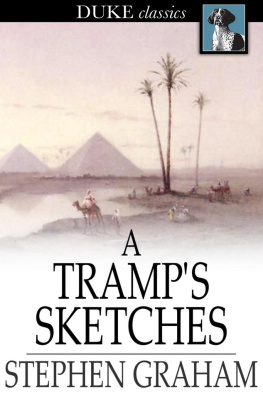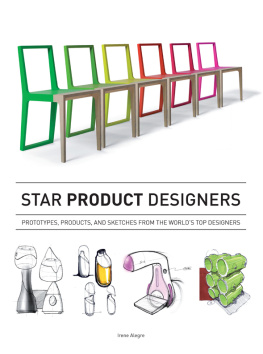
THE HOUSE of WORTH
FASHION SKETCHES, 19161918
Litchfield Historical Society
With essays by
Karen M. DePauw and Jessica D. Jenkins
Introduction by
Michael Krass
DOVER PUBLICATIONS, INC.
Mineola, New York
Frontispiece: Chrysanthme 8950, House of Worth,
Watercolor and Ink on paper, 1918, 1950-01-86-48
Copyright 2015 by The Litchfield Historical Society
All rights reserved.
The House of Worth: Fashion Sketches, 1916 1918 is a new work, first published by Dover Publications, Inc., in 2015.
Library of Congress Cataloging-in-Publication Data
The House of Worth : fashion sketches, 1916 1918 / Litchfield Historical Society with essays by Karen M. DePauw and Jessica D. Jenkins; introduction by Michael Krass.
pages cm
Includes bibliographical references.
ISBN-13: 978-0-486-79924-7 ISBN-10: 0-486-79924-7
1. House of Worth (Firm)History. 2. Fashion designFranceHistory20th century. 3. Fashion drawingFranceHistory20th century. I. DePauw, Karen M. II. Jenkins, Jessica D. III. House of Worth (Firm). IV. Litchfield Historical Society (Litchfield, Conn.)
TT505.W6H68 2015
746.920944dc23
2015012156
Book design by Jason Snyder
Manufactured in the United States by RR Donnelley
79924701 2015
www.doverpublications.com
CONTENTS
CATHERINE FIELDS
MICHAEL KRAS S
JESSICA D. JENKINS
KAREN M. DEPAUW
CATHERINE FIELDS, EXECUTIVE DIRECTOR, LITCHFIELD HISTORICAL SOCIETY
THE HOUSE OF WORTH FASHION SKETCHES featured in this book are one of the hidden treasures often found in small historical societies and museums. The collection was donated to the Litchfield Historical Society in 1921, and although they have been loved by the staff and occasional researcher, they have never been exhibited or published, and so are not widely known. The Historical Society is proud to partner with Dover Publications to bring this stunning collection to you. This publication is presented in conjunction with an exhibition at the Litchfield History Museum, featuring a selection of the drawings and related costume pieces.
The house of Worth project would not have been possible without the hard work and dedication of many individuals. Jessica D. Jenkins, the Litchfield Historical Society curator of collections, made the idea a reality. She conceived the exhibition and book and then ably managed the myriad of details that go into a project of this scopefrom supervising photography, to negotiating loans, to production of exhibition text and graphics. Jessica researched and wrote one of the key essays in the book, coordinated the work of the other authors, and was the main contact with the Dover staff. Her good humor, organizational skills, and dedication to the project were ever-present.
Karen M. DePauw, the exhibition guest curator, was a key member of the team. Karen helped develop the framework for the project, wrote the second main essay and the annotations that accompany a selection of the illustrations in the book, and the exhibition text. She brought her deep knowledge of costume history to the endeavor, and the project would not have been possible without her.
My good friend, costume designer Michael Krass, realized the potential of the collection the first time he saw it. It was years before he was able to use his research for a show, but the result was a Tony Award nomination for The Constant Wife. Michael brings his thoughts on the collection to his introduction.
Photographer David Stansburys magic touch is seen in the high-quality images that beautifully reproduce the extraordinary sketches.
The Litchfield Historical Society staff, Linda Hocking, curator of library and archives; Elizabeth OGrady, curator of education; and Megan Olver, education assistant and visitor services manager; read and edited the text, assisted with research, developed programs to accompany the exhibition, and organized publicity and promotion. Everything we do is a team effort and their work helped the project move forward smoothly and on time.
I cannot say enough about the staff at Dover Publications. Dover president Frank Fontana has been a friend of the Litchfield Historical Society for many years and it has been a great pleasure to work with him on this book. It took one quick conversation for Frank to see the potential in the Worth collection and to envision the book. He brought the concept to his able team, headed by editor-in-chief M.C. Waldrep, who approached the book with unbounded enthusiasm. M.C. guided us through the process with advice and help at every phase.
As always I would like to thank the Litchfield Historical Society Board of Trustees. President Michael Reardon and the entire board continually provide the support and encouragement that makes our work a pleasure.
MICHAEL KRASS
AS A COSTUME DESIGNER FOR THE THEATRE, I GO shopping through history for my present-day needs. I tell stories to live contemporary audiences; and my work and reverence is to them, not to a garment, a piece of research, or a moment in history. I employ history to speak to the eye of my audience, who may or may not be trained in the silhouette of 1917, but who surely know what is in todays windows of Macys and Saks Fifth Avenue. They want only to understand who they are meeting, what she values, why she got dressed that morning, and in what ways she is like them.
When, in the 1990s, I first viewed the house of Worth sketches this book contains, I thought immediately of how I might employ them. I had never seen a set of images like these, and knew they were unique, complex, and valuable to me and my future audiences.
Why?
First, they were made at a moment in time when all social structures were shifting around the world. As we now know, women would soon be showing the legs, arms, and backs they had never publicly exposed in all of history. And in this moment1916 and 1918the clothing that may look awkwardly proportioned to our modern eye reflects the rarely seen marker of a transformation that changed history.
Secondly, as a collective group, the images represent the output of a single design house. The portfolio was aimed at upper-class European and American clients for their comparatively conservative consumption. Seeing the images as a grouping is highly unique. While today we may easily see from runway shows what Calvin Kleins vision is for his customers in a certain season, it is rarer to understand this kind of vision from a hundred years ago, and these sketches provide that opportunity.
When I work, I begin by trying to understand the desires and circumstances of a character that first exists only as words on a page. Suddenly, with the house of Worth sketches available as a resource, I had a tool that fully documented and created a visualized representation (complete with fabric samples in some instances) of the story of a woman of a certain class and taste.
Sometime after I first became aware of these sketches, I was asked to design Somerset Maughams The Constant Wife for Broadway. The play takes place in London in the mid-1920s. Its characters live within an upper-middle-class existence: some very fashionable, some showy, some neither of these things. And there is a conservative mother of a certain age: Mrs. Culver. As I read the play, my mind leapt to the Worth research, sensing that a woman of her age and status would not have bobbed her hair, shown her legs, or, just as today, ventured into the mad fashion of the moment. Like todays Bill Blass or Oscar de la Renta customer, she would find comfort in beautiful clothing of a style with which she was familiar.









